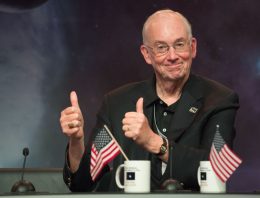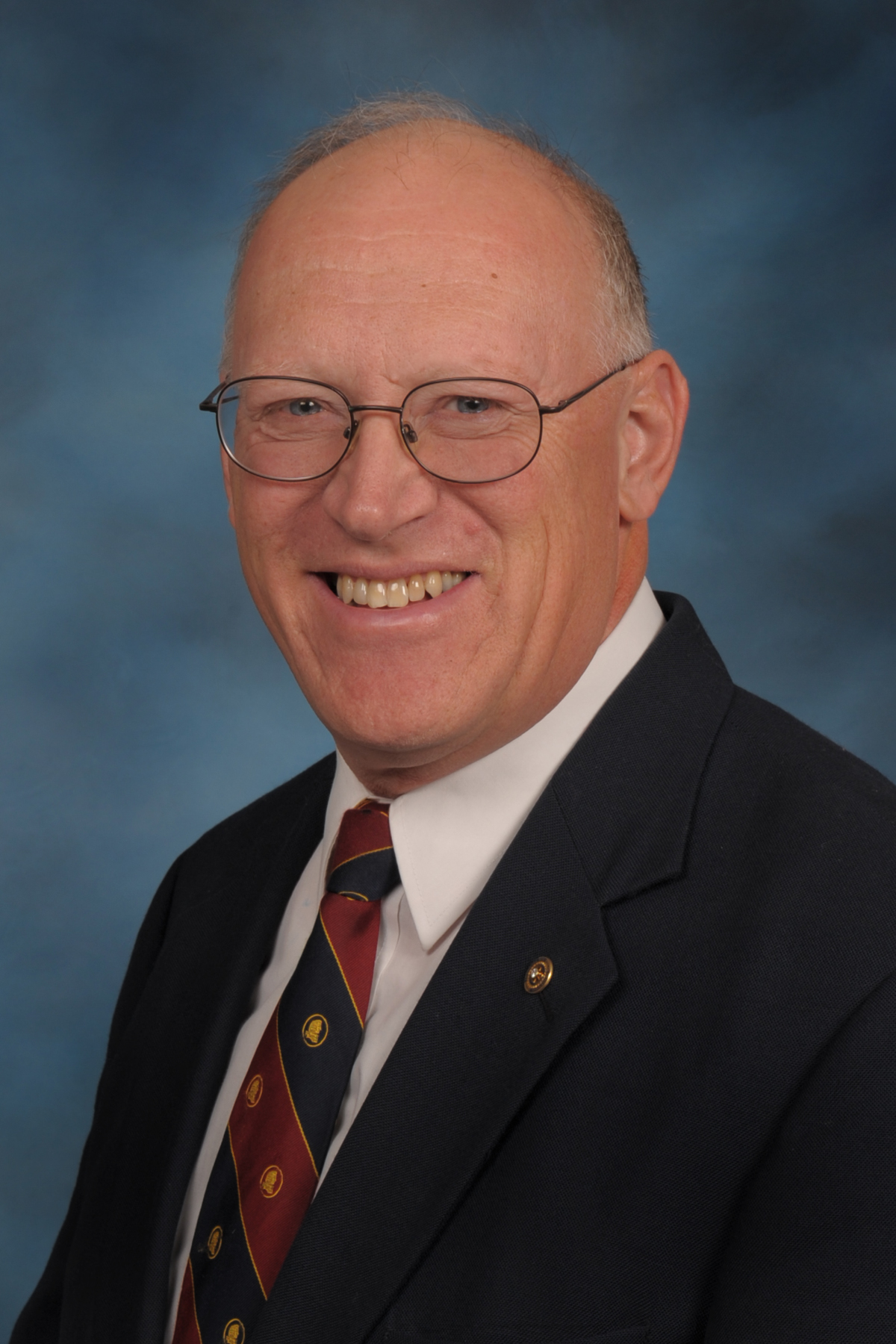July 14, 2015. An amazing scientific moment occurs, as a satellite from earth flies directly by the dwarf planet Pluto. Just like the man who originally discovered Pluto 85 years ago, the man who helped lead this mission to Pluto came from rural Kansas.

During the last two weeks, we have learned about the discoverer of Pluto, Clyde Tombaugh, and his boyhood home of Burdett, Kansas. Today, in the third and final profile in this series, we will learn about the man who was the project manager for the modern-day exploration of Pluto.
Glen Fountain is the recently-retired project manager for NASA’s New Horizons Pluto-Kuiper Belt mission at the Johns Hopkins University Applied Physics Laboratory in Laurel, Maryland. Glen grew up in western Reno County, Kansas. As a child, he was interested in science, and he found that his involvement in Boy Scouts broadened his horizons and encouraged his work ethic.
Glen went to Hutchinson Community College and then on to Kansas State where he earned advanced degrees in electrical engineering. “It was an excellent education and provided a foundation for a good career,” he said.
Glen’s family often vacationed in Colorado so he thought he would look for a job there, but a friend told him about the Applied Physics Lab in Maryland. “I figured I’d come east for five years and then go to Colorado. I still haven’t made it out there,” Glen said with a smile. He and his wife Sharon make their home in Maryland.
“I’ve had a great career doing interesting things,” Glen said. At the Applied Physics Lab, he worked on navigation satellites and other projects.
After Voyager flew by Neptune in 1989, the scientific community noted that NASA had gone to every one of our solar system’s planets at the time except Pluto. However, the estimated cost of going to Pluto was, um, astronomical. In fact, the agency even announced, “The Pluto mission is dead.” This generated strong pushback from the scientific community and the public, and eventually the project was reinstated.
In 2001, the Applied Physics Lab was selected to lead the project. Glen Fountain became the project manager in 2003.
The scope of the project was massive. “Many people didn’t think we could do it,” Glen said.
NASA called the project the New Horizons Pluto-Kuiper Belt mission, or New Horizons for short. The New Horizons spacecraft was launched in 2006. New Horizons was the fastest spacecraft ever to leave earth. Even so, it took 9.5 years and three billion miles to get to Pluto.
“We hit the target within 40 miles and arrived within 90 seconds of when we wanted to arrive,” Glen said. That’s like a person on Earth shooting a BB and hitting the exact pebble they were aiming for at the bottom of a crater on the moon. What’s more, it enabled the spacecraft to capture amazing images and the most close-up pictures of Pluto in history.
“We’ve found Pluto to be a much more fascinating place than any of us expected,” he said. “It’s a fantastic place and we’ve learned a lot.” The mission continues as New Horizons will fly into the Kuiper Belt in 2019.
This mission also showed an appreciation for history. The New Horizons spacecraft carried some of the ashes of Clyde Tombaugh, the man who found Pluto first. Glen Fountain invited Clyde Tombaugh’s family to come to the headquarters for the flyby.
This was a wonderful way to close the circle of discovery. It was especially fitting because Glen Fountain, like Tombaugh, grew up in rural Kansas. Glen Fountain was originally from Arlington, Kansas, population 473. Now, that’s rural.
For more information on the Pluto flyby, go to www.nasa.gov/mission_pages/newhorizons/main.
On July 14, 2015, the New Horizons spacecraft flew directly by Pluto, some three billion miles away from Earth, and is continuing into the Kuiper Belt. We commend Glen Fountain and all those involved in the New Horizons project for making a difference with their deep space, scientific expedition. It is exciting to hear that this project is still exploring new horizons.
Audio and text files of Kansas Profiles are available at http://www.kansasprofile.com. For more information about the Huck Boyd Institute, interested persons can visit http://www.huckboydinstitute.org.
